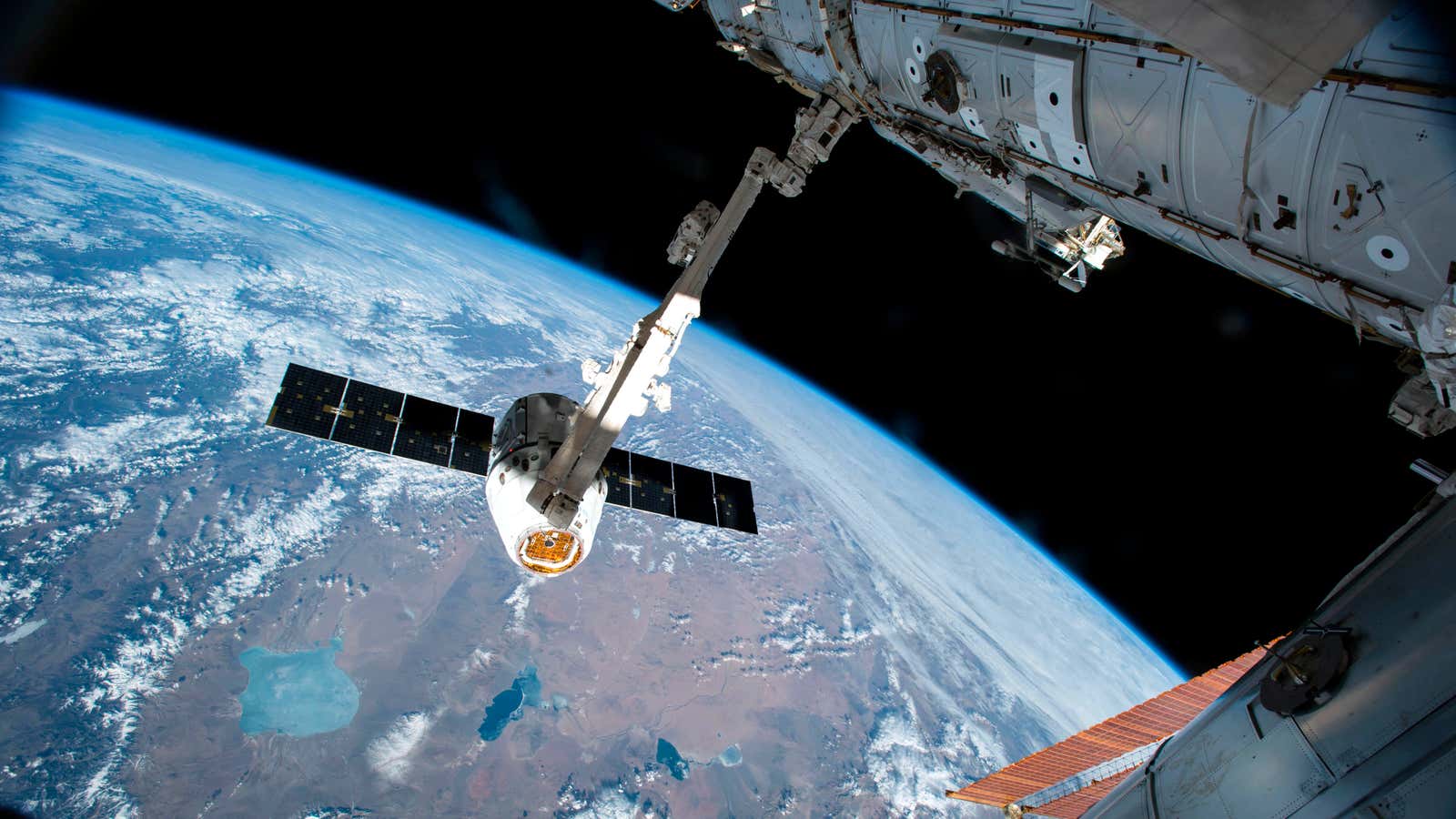SpaceX launched a load of science and supplies to the International Space Station today—this time, from a historic launch site that once hosted Space Shuttles and Apollo moon missions.
The launch, rescheduled from yesterday to today at 9:38 EST, came off despite passing rain showers, and ended with Dragon spacecraft on the way to the ISS and the first stage of the Falcon 9 rocket landed back at Cape Canaveral after delivering its cargo to orbit.
SpaceX launch livestream
The rocket’s stage retured to a landing pad at Cape Canaveral rather than the sea-going robot barge used for missions when the rocket must send its cargo to higher orbits than the comparatively low-flying ISS, which cruises about 250 miles over the earth. It will take about two days after takeoff for the Dragon capsule launched atop the Falcon rocket to rendezvous with the space station.
There was at least one pre-launch problem: A small helium leak was identified in the second stage of the rocket, but Jessica Jensen, SpaceX’s Dragon program manager, said it didn’t pose an immediate threat to the mission. She said the leak was not in the helium coolant system which failed disastrously during fueling last year.
Instead, the fault was found in part of the system that re-starts the second-stage engine after launch, which could make it impossible for the company to dispose of the stage after the cargo-carrying Dragon craft separates from the rocket. While making sure the second stage doesn’t become space trash isn’t strictly necessary, it is good space manners. Regardless, the company was ready to shut down the flight if it looked like the second stage wouldn’t functioning.
The Dragon itself is mostly carrying scientific gear, since NASA reports the ISS is fully stocked with consumables. Of the almost 5,500 lbs (2,490 kg) of cargo, just 652 lbs are crew supplies; the rest of the weight largely comes from scientific investigations, including a last-minute load of mice put in 24 hours before launch in a special habitat, and two sensors that will be mounted on the ISS to study ozone levels and lighting in the atmosphere below.
This flight marks an important return to serving SpaceX’s most important client, NASA, after a six-month break in launches due to the September accident. Last month, the company returned to flight with a commercial satellite launch. Gwynne Shotwell, the company’s president, remains bullish that the company will be able to fly humans next year on its commercial crew vehicles, saying her response to a recent government audit predicting another year of delays was, “the hell we won’t.”
“We need to finish the work we are doing right now,” Shotwell said of certifying its crewed vehicle and launching a new large rocket, Falcon Heavy, later this year.
